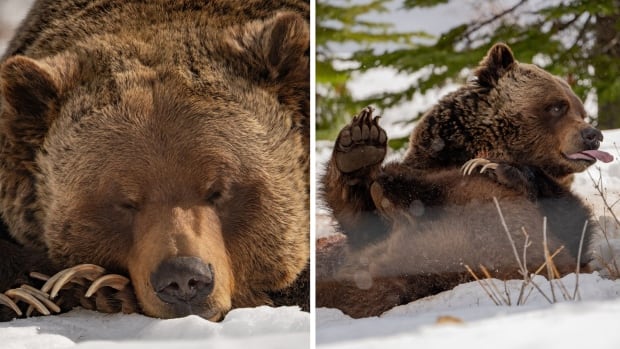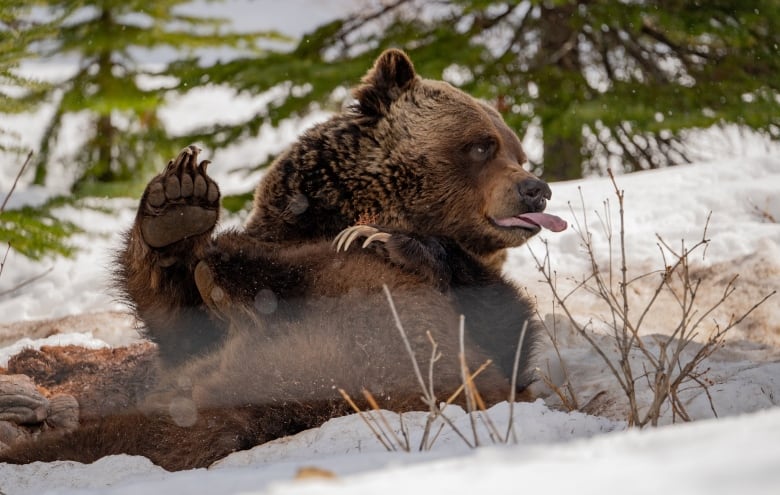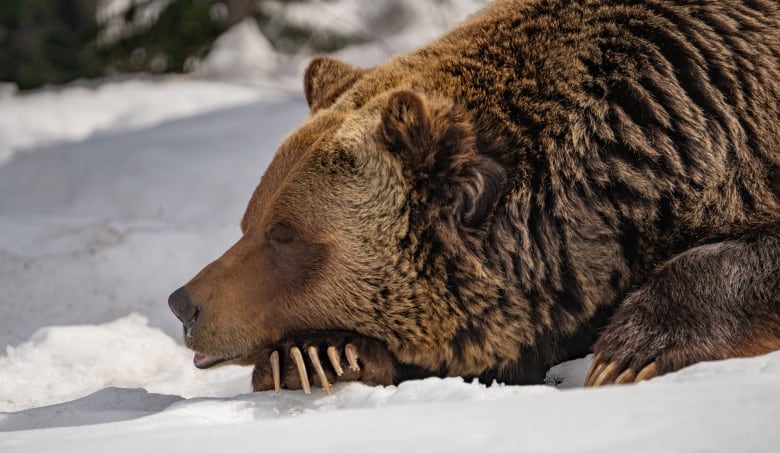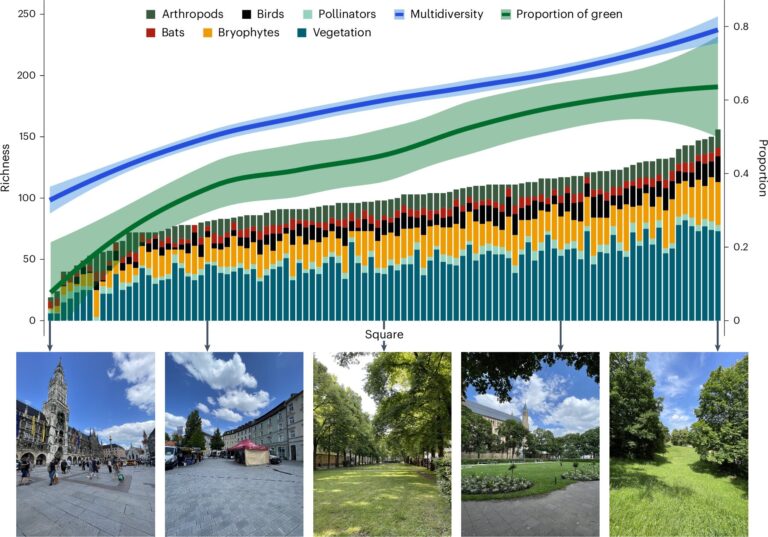
Even with the heavy snowfall that hit southern Alberta this week, it’s still springtime, and bears across the Rockies are emerging from hibernation.
Boo, a grizzly bear living in an enclosure at Kicking Horse Mountain Resort near Golden, B.C., recently woke from his winter slumber. And the infamous grizzly known as “The Boss,” or Bear No. 122, was reportedly seen out and about in Banff National Park this week.
CBC Radio hosts spoke with some animal experts to learn more about the bear necessities of hibernation.
Gord Stenhouse, grizzly bear research scientist, says grizzlies have an interesting wake-up pattern.
“In the fall, the pregnant female bears go into the dens first, and they’re the last ones to emerge in the spring,” he told CBC Radio host Judy Aldous on the Calgary Eyeopener.
“But the big males, like The Boss, they’re the last to go into the den in the fall and the first to emerge [in the spring].”
As Alberta edges closer to spring, wildlife experts say bears are starting to emerge from their winter dens.
Stenhouse says researchers believe this is related to body size, with the largest bears needing the most food and preparation to make it through the winter months.
And Brian Keating, a Calgary-based naturalist, told host Chris dela Torre on CBC’s The Homestretch that grizzlies have started emerging roughly a week earlier than normal over the past few years, largely due to warming temperatures.
“Remember in Alberta we have three choices: we either hibernate, so you sleep through it all; we migrate, you get the heck out of here like a lot of snowbirds do; or we tolerate, like our true Canadians … I’m referring to animals like chickadees, Canada jays and so many others,” said Keating.
He says larger male bears typically start emerging from their slumber around mid to end of March. Young bears then emerge starting in April, “and females with cubs can come out any time in April or May.”
Some indications that it’s time to come out of hibernation are an increase in temperatures and more daylight.

Plus, Stenhouse says, meltwater acts as a bit of an alarm clock, letting the bears know spring has arrived.
As the sun melts the snow that’s above a bear’s den, it creates a bit of a “shower,” according to the grizzly expert.
Torpor, recycling urine, slowed breathing
So what’s a bear’s first order of business upon waking up? Find food.
Specifically, vegetation.
“The areas where you see green, you might see more bears than you expect,” said Stenhouse. “We don’t have the salmon streams in the Rocky Mountains like they do in the B.C. coast, so early in the spring, it’s bears concentrating where there’s food.”
And Keating says bears can lose up to a third of their body weight over the winter.
“[Bears are] called ‘super hibernators.’ They don’t experience what’s called deep hibernation that marmots and gophers do — those hibernators allow their body temperature to drop way down to just maybe a degree or two or three above the ambient temperature of their den,” said Keating.
“But when bears hibernate, they go into what some call a torpor, and they only drop their body temperature about 12 degrees below their normal summer body temperature.”

Keating says a grizzly’s heart rate will also drop from 50 beats per minute to roughly eight, and they typically take one breath every 45 seconds.
“They don’t get up to go pee and they don’t defecate throughout the entire hibernation process,” he said. “They’re the ultimate recyclers. They recycle all that material.”
Calgary Eyeopener8:45Bears are waking up
Some big furry sleepyheads are emerging from their dens. We’re talking grizzly bears.
Because their body systems have slowed for months, emerging from hibernation is like a lazy Sunday morning.
But just because some grizzlies could be groggy, that doesn’t mean they aren’t dangerous.
Keating warns that backcountry enthusiasts should always be prepared to encounter bears and carry all the necessary safety equipment.
“They can wake up quickly and start moving around if they need to.… They can react immediately.”







